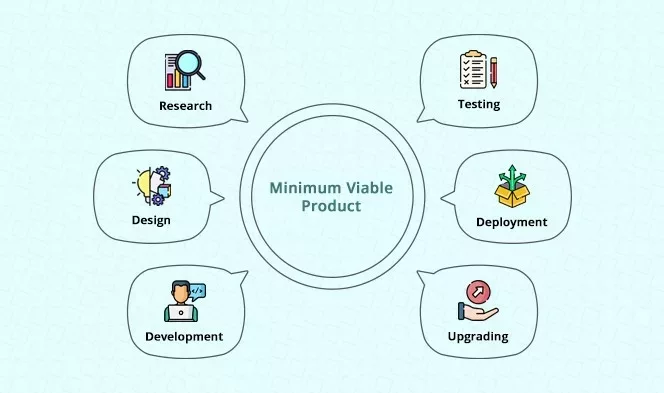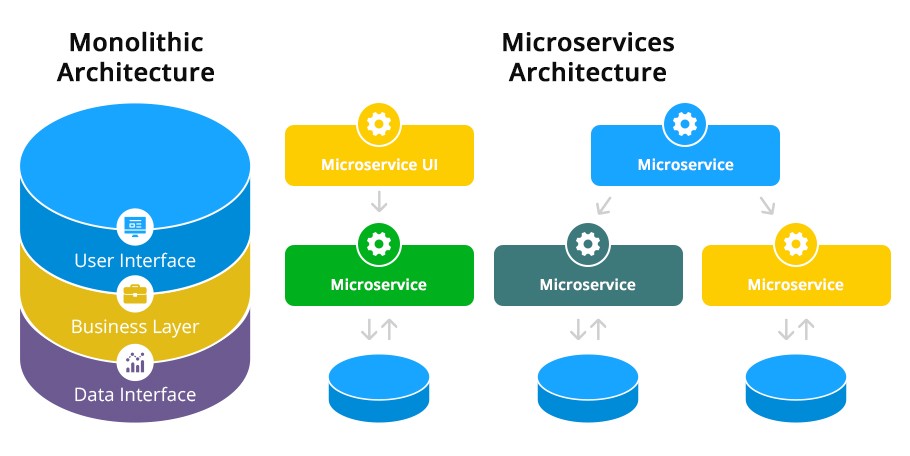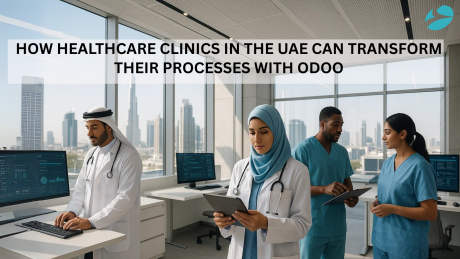Complete Guide on Minimum Viable Product
22 Jun, 2021
10 min read
22 Jun, 2021
10 min read

What is the most common way to start with mobile app development?
Research → Design → Development → Testing → Deployment → Maintenance/ Upgrading
This is standard practice when it comes to developing applications. However, over time, businesses have changed their ways of building applications. One of these changed ways is creating a Minimum Viable Product. There are more than six billion mobile devices in the world which are estimated to increase by 2026. This is a huge number when we think about the number of mobile users and the number of applications.
The mobile apps market is also extremely competitive, and if you are thinking of developing an application, you need to have a USP which helps you stand out. Over the years, users’ needs have changed immensely, and to keep up with these changing needs, businesses need to define the new model. Hence, MVP came into play. This app development model helps startups and middle and large scale companies develop applications with purpose.
Minimum Viable Product acronym as MVP is a basic launchable product that can work for early adopters. It is a basic app with needed features that define its value proposition.
The major aim of building MVP products is to attract early adopters, understand the market, and make an application that fulfills user needs. Once you launch the MVP product, the next step is to take user feedback and re-iterate the app by fixing bugs and adding new features.
Going further, let’s see the benefits of MVP products:
Here, the main focus is to define the core objective of the application. You just need to focus on one idea and solve it. The purpose of the MVP model is to build the right product with a minimum budget. Having a high priority but minimum features can reduce the cost of the products.
When you develop an MVP product, one of the major benefits is that you can test it with the users. It helps you know whether the application fulfills the needs, is it helping users, are features working perfectly, and more. Early testing helps you to make the application better with each iteration.
When you provide the application to early testers, you get their feedback which helps you to make the application better. Each feedback will help you to make the application better by adding needed features and removing unwanted ones.
When you research the market and develop an application according to its needs, you know the market better and are able to solve real-world problems. When you launch the MVP product and invite early testers, you realize what the people think of your product and ways you can make it better.
MVP products take less time to develop an application which means less development cost. This helps businesses to develop applications faster and save money.
MVP apps are budget-friendly as it does not take much investment to develop basic app features. When you start with mobile app development, starting with MVP will help you know the market and users.
Next up, let’s discuss the MVP development process:
The first step you need to do is to carry out market research. Understand the market and your users’ needs. When you do market research, you understand the recent market trends, things your customers need, know your competitors, and understand how they are solving the problems. These things will help you to define the needs of the market.
The first step is to conduct various surveys to know the market’s problems or the current need of the market. This will help you to solve real-world problems. One of the major reasons why startups fail is the lack of research. So, make sure to invest more time in research to understand the market and users better.
Understanding and defining your users’ persona is important. It will help you understand the product from the users’ perspective and provide them with a better experience with your app’s first iteration. Building a user persona starts from the first step: users opening the application to the last step, i.e., purchasing the products. Define the user’s flow and address the actions users need to take to meet the end goal. Following are the things you need to consider when creating a user persona:
Once you know the users’ activities and study them, you will know how to make the application better and make users interact with the application to make a purchase.
The next step is to select the technologies you use. There are plenty of options available when you want to develop an application. But, the first thing you need to have is clarity that you are going to develop: an MVP or a fully functional application. If you are going with the former one, i.e., MVP product, choose the flexible and scalable technology. MVP apps will constantly be changing, and it will be easy for your developers to make relevant changes.
You should always choose the technology your team is comfortable with. You need to know the type of architecture you will use. Here is the brief about two types of architecture:

Choosing features is crucial; you need to carry out market research and know your users’ necessary features. Here, you will need to verify your concept before moving to product development. When developing any application following are the typical steps:
This is a continuous and ongoing process for mobile app development. You will reiterate the process based on your user feedback and their needs.
One of the best examples of this is the app named “Burbn.”
It was a location-based iPhone-only app that allows users to check-in, earn points to hang out with their friends, and share their pictures. Unfortunately, after the initial release, the application was not working correctly, and users were just sharing pictures. So the team decided to remove all the unnecessary features and keep the photo-sharing option. And this application today is “Instagram.” We all know the success of Instagram, and the number of users it has, the number of images, Reels, and Stories shared every day, and the amount of data generated every second.
The key takeaway here is to know your users, understand their needs, and re-iterate accordingly.
In this phase, you will need to do user testing and usability testing. The testing phase helps you know whether your app will be used and how users can use your application. These two things will give you more clarity on your application. Generally, before releasing any application, it is expected that it is complete. But that’s not the case with MVP products; the initial release is incomplete; it is expected to at least work flawlessly on any device. So, in MVP products, your aim while testing should be to make it flawless.
The main aim of MVP products is to collect user feedback, analyze them, and take necessary actions in the subsequent iterations. Once your application is stable, your next step is to set up the necessary tools to collect users’ feedback. Different measures you need to take to understand your users better, like demographic and behavioral data.
Note: Data collection must be done with users’ consent.
There are three ways you can collect the data from the users:
Note: Due to EU laws, you won’t use these tools to their full potential in European Union.
This is the last step. Here your MVP product is ready to launch, and users can use it. Remember, this is just the first step. You need to iterate the entire development process depending on the feedback you receive from your users.
Going further, let’s discuss the cost of developing MVP products:
There are three ways you can develop your MVP products, let’s discuss them in brief:
When planning to start with in-house development, you need to consider plenty of things. First, you need to identify people with unique and different skill sets who can handle pressure and develop applications. There are pros and cons of in-house development as well. You will be responsible for everything from picking the team, assigning tasks, ensuring they are done perfectly, timely deliveries, etc.
Here, the development cost is higher as you will need to invest a lot in hiring people, building the infrastructure, setting up servers, marketing, and plenty of other things.
You can outsource your development to other IT companies like us to help you develop an MVP product from scratch. Established IT companies have a dedicated team of developers, researchers, designers, marketers, testers, system administrators, and sales who can help you with the entire development process. The major benefits of hiring IT companies are timely deliveries and industry-level work.
You don’t need to worry about any technicalities as the companies will help you with everything. They will also help you with deployment and further updates and maintenance of the applications.
Many freelance developers can help you with developing an application. But, there are some loopholes here as freelance developers lack experience and will not provide you the complete infrastructure. You will have to deploy the MVP product, get feedback from users, understand them, and reach out to them to make the changes. This entire process includes many back and forth, and there are chances of miscommunication, resulting in the delay of release and making the process complex.
Considering all the factors and depending on your requirements, you can decide where and how you want to develop an application. In my opinion, the best solution is to hire an IT company that can help you with app development and provide the needed infrastructure and resources. If you are looking for an IT company that can help you with ecommerce mobile app development, you can reach out to us.
While starting with mobile app development, below are some of the common mistakes which everyone makes. So, let’s see them in brief:
Instead of directly starting with development, the first step is to understand the market’s demand. Then, find the answer to certain questions like:
Once you find the answers to these questions and have the clarity of mind to know what you want to do and create, you can easily find the solution.
Prototyping the product is the most important thing. It gives you insights into how the product will turn up, how users will interact, use and understand it easily, etc. Skipping this step is not at all a good idea. It is a vital part of product development that helps in turning the idea into a reality. A prototype is the bridge between idea and turning it into a reality as it focuses on the “How” part of the product.
Once you create a prototype model, your next step is to allow users to try it. Here, you need to understand who your audience is. Don’t get feedback on your product from friends or relatives who are not your target audience. This will end up having the wrong feedback from the wrong audience, and your product might not see the light of the day at all. So, make sure you have clarity on your target audience.
You need to have an organized methodology to develop an application. Working without proper methodology is very likely to burn you out and make you drop the development halfway. Here, you can follow the different development practices like the Waterfall model, Agile model, etc.
Agile model is the most preferred model currently because it is easy to iterate the product and have the team on the same page. Not only this, it even helps businesses to make qualitative products.
Qualitative and quantitative feedback are two ways to collect data from your users. You need to rely on both the ways and value them to an accurate conclusion. Both of these methods have a vital role to play and can help to make the right decision.
All the successful products started as MVP products initially and got better with each passing day on users’ feedback.
Facebook did an MVP testing that connects schools and colleges with messaging and sharing things with friends online. In the early days, Facebook was a basic model MVP that had all the necessary functionality to get users to use it. The application launched to a certain number of users and got plenty of feedback. We all know today how huge Facebook has become.
Today Twitter is the second most popular social media platform, followed by Facebook. It was started as a platform for internal communication, and later on, looking at the potential of the platform, it was launched.
Developing an MVP has become a need of an hour. It gives you plenty of opportunities to understand the market, know about users’ needs, and define ways to solve them. Initially, it would be difficult to keep up with the changing demands of the users, but you will understand your users’ needs over time. If you plan to build the minimum viable product, you can reach out to us; we have helped many companies build their MVP, turn their ideas into reality, and develop full-fledged applications.
All product and company names are trademarks™, registered® or copyright© trademarks of their respective holders. Use of them does not imply any affiliation with or endorsement by them.

68
By Biztech
09 Oct, 2025

75
By Biztech
09 Oct, 2025

91
By Biztech
06 Oct, 2025